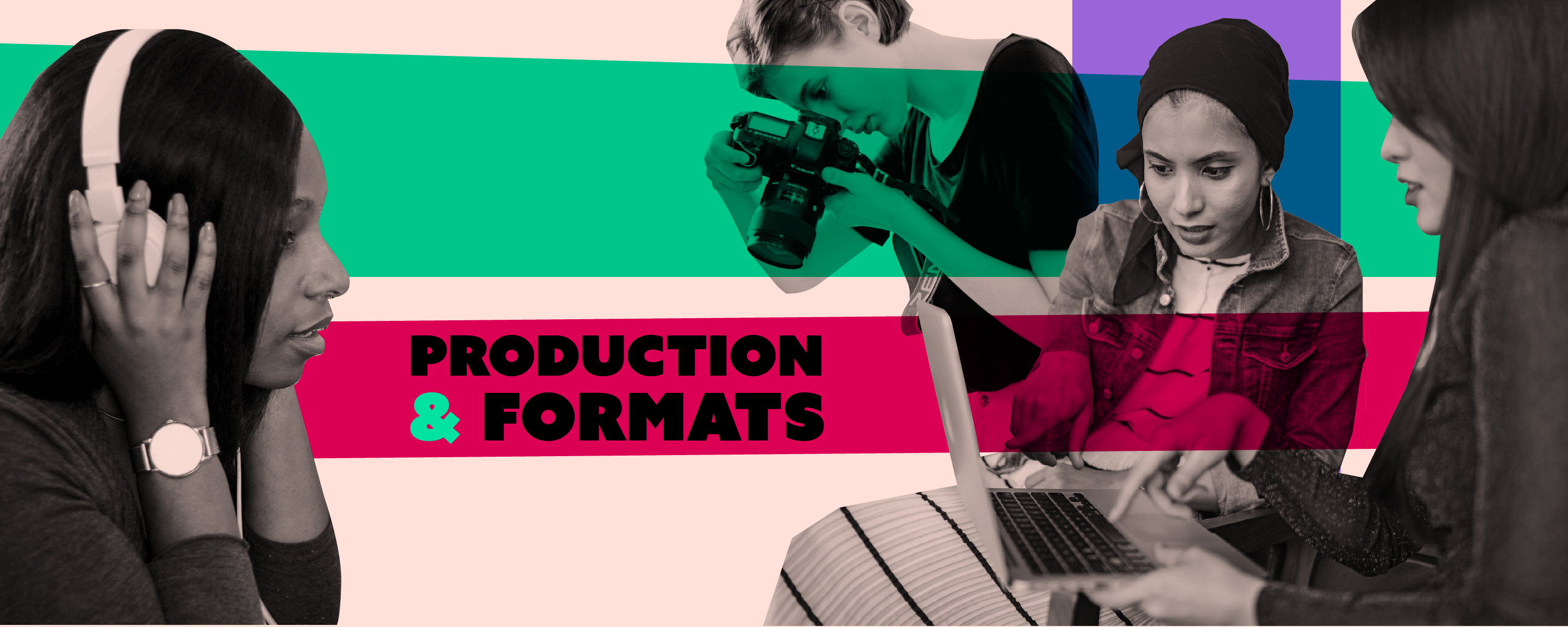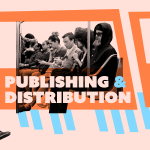
From Closed To Open – How The Design Stack Is Evolving
By Alexis Lloyd
If you are starting a new public media organization now, it’s crucial to think about how technology is going to change in the next 5 or so years – it’s not enough to just think about what is happening now. For pretty much every area of the media workflow, this means considering cloud-based tools and what they mean for production and collaboration. You might already be using cloud-based tools for text editing, like Google Docs or Dropbox Paper, but this trend is also changing the way we work together on more intensive media production, like photography, visual design, audio and video.
Ten years ago, if you wanted to design a website or an app, you would immediately turn to your trusty Adobe software, likely Photoshop or Illustrator. Adobe had owned the software space for artists and designers since the earliest days of the internet, and having knowledge of (and access to) their tools was a de facto requirement for digital media production. Photoshop was so widely used that most of us never thought to question its dominance.
But as we know, complacency makes fertile ground for innovation, and Adobe’s roots lay in designing for the static world of photography, posters, and magazines. Over time, digital media design grew as a discipline — designers were thinking in more sophisticated ways about interaction and motion, and their workflows were more closely intertwined with software development and engineering. In parallel, the growth of agile product development processes necessitated more fluid ways of prototyping and iterating. Adobe’s tools began to feel limiting, slow, and ill-adapted to designing modern user experiences.
The first real challenger to Adobe’s dominance was Sketch, which launched in 2010, and over the next few years began to stealthily make its way into designers’ workflows. Sketch was vector-based, like Illustrator, but purpose-built for UX and UI design. It gave designers tools like symbols and responsiveness that allowed them to easily do web design tasks that had historically been painstaking. Its simple, minimal interface sat in dramatic contrast to Adobe’s complex UI that could take years to fully master. And it had a rich plugin architecture that allowed the community at large to contribute all kinds of extensible toolsets for specific needs.
Between 2010-2015, we saw not only the growth of Sketch, but also the launch of both Invision and Zeplin. Invision allowed designers to easily export Sketch files into clickable, swipeable, lifelike prototypes, making it easy to communicate the vision for a fully interactive experience before a single line of code had been written. Zeplin took those same Sketch files and automatically created technical specifications for engineers, saving designers hours of time formerly spent redlining design files and writing documentation.
For a few years, we seemed to be moving towards Sketch / Invision / Zeplin as a new industry standard for digital design teams. But then Figma came along in 2016 and changed everything. Where tools like Sketch innovated by being simpler to use and more purpose built for their task than Adobe, Figma changed the game at a technology level. Their design software ran in the browser, which was completely radical, and most importantly, enabled cloud storage and real-time collaboration.
For designers, it was the shift from Microsoft Word, where you were passing files around and naming them “design.final_Final_noreallyFINAL” to something like Google Docs or Dropbox Paper. The ability to have a single source of truth for a document, to collaborate in real time with others, and to annotate and comment on design files was truly game-changing. On top of all that, Figma came with built-in prototyping and technical spec tools. This meant that where you might previously need three pieces of software to get the work done, now you only needed one. Unsurprisingly, Figma’s adoption and growth has been overwhelming amongst designers over the past few years.
This is all great news for designers and their collaborators, but what does it mean in the context of public media? Firstly, it means tools are more open and transparent to everyone involved in creating content, not just specialized designers. Whereas Adobe Creative Cloud (which now includes Adobe XD, a competitor to newer tools like Figma) requires a subscription that costs anywhere from $10–52 per month per person, the newer software is considerably more affordable. Sketch is a $99 purchase, which includes a year of updates. And Figma is free for up to 2 editors and 3 projects.
Secondly, anyone can view or comment on a Figma file without having to have the software or buy a license. This is a really important shift in the design stack – it makes Figma radically more collaborative, as design work can be widely shared and discussed amongst editorial and product teams. This means that the conversation and decision making around content is happening in the same place as the content itself – you no longer need to switch between email, google docs, slack channels and the files themselves to keep up with changes.
This concept of co-presence – having your teams and clients’ conversations within the same design tool – is a really important innovation. In my work with the design team at Automattic, I switched the whole team from Sketch/Invision to Figma. In some cases, this meant getting people with years of expertise to change to a new workflow. The thing that made people really excited about the switch was co-presence, especially given that Automattic is a fully distributed company where everyone works from home (something we’re all becoming more familiar with). Seeing someone else’s cursor in your Figma file gives you the feeling of being in the same space, working together, able to point to and discuss your work virtually. It’s a simple but radical shift in how we collaborate, and once you’ve tried it, it’s difficult to imagine working any other way.
Figma has also made recent moves toward supporting more open-source design work with its announcement of Figma Community, a space where you can “publish live design files that anyone in the world can inspect, remix, and learn from”. For example, the City of Chicago is launching a public design system for their citizens to remix. The files published in Figma Community are Creative Commons licensed by default, making this a potentially rich space for public media organizations to participate and share resources for public use. For small, local media organizations, this kind of platform means that organizations can share artifacts and templates, potentially alleviating the need for each one to have full-stack design resources.
There are trade offs, however – while the cloud storage model has radically improved the ability to collaborate, to share (urls are powerful!), and to have a single source of truth, there are always data security and privacy concerns to consider whenever you trust a company to store your files. But overall, privacy issues are less of a concern with a company that charges for its software than it is with a company like Google that is built on an advertising-driven business model.
This space is still evolving, but if you’re looking at developing your technology strategy for the next 5 years, you have to factor in the changes that tools like Figma are bringing to design and production workflows. Cloud storage is already well understood, but cloud collaboration is the real game-changer – it will radically change how you work together as production teams on high-end media production. There are obvious challenges with bandwidth and memory for handling very high-quality files, but we’re seeing huge progress in browser based tools every year. The future is open, collaborative, and very exciting.

Alexis Lloyd
Vice President of Product Design at Medium
Alexis is a product design and innovation leader who has spent her career designing experiences for reading and writing on the internet. She is currently the VP of Product Design at Medium and has previously led design and innovation work at The New York Times R&D Lab, Axios, and Automattic. She co-leads the Ethical Futures Lab and has a deep curiosity about how humans and machines co-evolve with one another.



